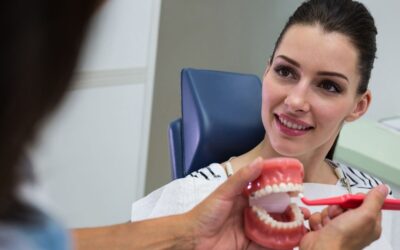Tooth extractions can be painful and uncomfortable, but they are often necessary for maintaining oral health. After a tooth extraction, it’s crucial to follow proper aftercare instructions to ensure a smooth recovery. One common question many people have is, “Why is it important to avoid dairy after tooth extraction?” This is a question that has sparked much discussion among patients and dental professionals alike.
In this article, we’ll dive into the reasons why dairy should be avoided after tooth extraction, how it can impact your healing process, and what alternatives you can consider. Keep reading to learn more!
The Impact of Dairy on Post-Extraction Healing
Dairy products like milk, cheese, and yogurt are often staples in many people’s diets. However, after a tooth extraction, consuming dairy can potentially interfere with your recovery process.
Dairy products may cause discomfort in the mouth, especially after surgery. They can also increase the likelihood of post-surgical complications. Here’s why dairy might not be the best choice after a tooth extraction:
Increased Mucus Production
Dairy products, such as milk and cheese, are known to stimulate mucus production in the body. After a tooth extraction, the healing process involves managing swelling and discomfort in the mouth, and excessive mucus can make the situation worse. Increased mucus can cause irritation in the throat and mouth, making it difficult to eat or drink comfortably. This excess mucus can also potentially increase the risk of infection at the extraction site, as it may contribute to bacterial growth.
Potential for Infection
Dairy is a nutrient-rich environment that can promote the growth of bacteria in the mouth. When you consume dairy, especially in the first few days after a tooth extraction, bacteria may accumulate around the extraction site, leading to complications such as infection. Dairy products like yogurt or milk may get stuck in the extraction wound or in the gaps between teeth, which can delay healing or lead to an abscess. To minimize this risk, it is advisable to avoid dairy, as it could hinder the body’s natural ability to fight off infection during the critical initial days of recovery.
Delayed Healing and Inflammation
Dairy products can cause mild inflammation in some people, especially those with sensitivities or lactose intolerance. This inflammation can interfere with the body’s ability to heal quickly after a tooth extraction. When inflammation occurs at the extraction site, it can cause prolonged swelling, pain, and discomfort. Additionally, consuming dairy may cause the body to react negatively, preventing the blood clot from forming and remaining in place, which is essential for proper healing. To promote faster recovery, it’s essential to reduce inflammation by avoiding inflammatory foods like dairy during the initial post-extraction period.
To ensure a quicker and smoother recovery, it’s often recommended to avoid dairy for at least a few days after your tooth extraction. Instead, you should focus on soft, non-dairy foods that are easier to eat and digest.
How Dairy Affects Blood Clotting After Tooth Extraction
Blood clotting is crucial after a tooth extraction because it helps seal the wound and promote healing. Dairy can interfere with the clotting process, making it harder for the blood clot to form and stay intact.
Interference with Blood Clot Formation
After a tooth extraction, the formation of a blood clot at the site of the extraction is crucial for proper healing. The blood clot helps protect the exposed bone and nerve endings, preventing infection and encouraging tissue regeneration. Dairy products can interfere with this clotting process by affecting the pH balance in the mouth. For example, milk and other dairy items can slightly alter the acidity or alkalinity in your mouth, which may disrupt the blood clot’s ability to form and remain intact. A disrupted blood clot can lead to complications such as prolonged bleeding, infection, and delayed healing.
Increased Risk of Dry Socket
Dry socket is a painful condition that occurs when the blood clot dislodges or dissolves prematurely, exposing the bone and nerves to air, food, and bacteria. Consuming dairy, particularly foods that are thick or sticky like cheese or yogurt, can cause the blood clot to loosen or be displaced. The act of chewing and the texture of dairy products can disturb the clot, increasing the likelihood of developing dry socket. This condition can significantly delay the healing process, causing intense pain and requiring further medical treatment. To reduce the risk of dry socket, it’s advisable to avoid dairy products for the first few days after a tooth extraction.
Therefore, avoiding dairy is crucial to preventing complications such as dry socket and ensuring that the healing process moves along smoothly.
Alternatives to Dairy After Tooth Extraction
While it’s clear that dairy can interfere with the healing process after tooth extraction, the good news is that there are plenty of alternatives available to keep you nourished during recovery.
Non-Dairy Milk Options
If you’re craving a creamy beverage but want to avoid dairy after your tooth extraction, there are several non-dairy milk alternatives available. Options such as almond milk, oat milk, coconut milk, and soy milk are great substitutes that can provide the same smooth texture without the risk of interfering with the healing process. These alternatives are gentle on the mouth and don’t promote mucus production or cause irritation, making them ideal during your recovery. Additionally, many non-dairy milk options are fortified with essential vitamins like calcium and vitamin D, which support bone health, especially important after an extraction.
Smoothies and Soups
After tooth extraction, it’s important to consume soft foods that won’t irritate the surgical site. Smoothies and soups are both excellent choices because they are easy to consume and can be packed with nutrients without causing any discomfort. You can blend a variety of fruits, vegetables, and protein sources (such as non-dairy yogurt or nut butters) to create a nutrient-dense smoothie. Likewise, soups made from vegetable broth or chicken broth are easy to sip and can be customized to your taste with various soft, non-dairy ingredients. Both smoothies and soups are soothing to the mouth and throat, which is particularly important during the healing process.
Soft Fruits and Vegetables
Soft fruits like bananas, avocados, and applesauce, as well as well-cooked vegetables like sweet potatoes and carrots, can serve as healthy, dairy-free alternatives to your usual post-extraction diet. These foods are rich in essential vitamins, minerals, and healthy fats, which support your body’s healing process. Soft fruits, such as mashed or pureed fruits, are easy on the mouth and can help reduce irritation around the extraction site. Avocados, in particular, are high in healthy fats, which aid tissue repair and can help speed up recovery. Additionally, these fruits and vegetables can be easily incorporated into smoothies or eaten alone for a nutritious meal replacement.
It’s important to focus on maintaining a balanced diet even while avoiding dairy. Opt for foods that are rich in vitamins, minerals, and protein to support your body’s healing process.
Tips for Managing Post-Extraction Care and Avoiding Dairy
In addition to avoiding dairy, here are some tips to help you recover faster after your tooth extraction:
Hydrate Regularly with Water and Non-Dairy Beverages
Staying hydrated is essential for the healing process after a tooth extraction. Drinking plenty of water helps flush out bacteria, keeps your mouth clean, and supports the body’s natural recovery mechanisms. Since dairy products can contribute to mucus buildup and inflammation, it’s important to opt for non-dairy alternatives. Drink water, herbal teas, or non-dairy milks such as almond, oat, or coconut milk to stay hydrated without affecting your healing. Be sure to avoid sugary drinks or anything too acidic, as these can irritate the extraction site.
Stick to Soft, Easy-to-Eat Foods
After tooth extraction, your mouth will be sensitive, and chewing solid or hard foods can be painful and may disrupt the healing process. Stick to soft foods that don’t require much chewing, such as mashed potatoes, scrambled eggs, or oatmeal. These foods are gentle on the extraction site and won’t irritate the area. For dessert or a snack, you can try smoothies, pudding, or non-dairy yogurt. These options are nutritious and help keep your mouth and body nourished without causing any discomfort.
Avoid Using Straws to Prevent Dislodging the Blood Clot
While it might be tempting to use a straw to drink liquids, it’s best to avoid them after a tooth extraction. Using a straw can create suction in the mouth, which may dislodge the blood clot that forms at the extraction site. If the blood clot becomes dislodged, you could be at risk of developing a painful condition called dry socket, which can delay healing and cause significant pain. Opt for sipping directly from a glass or cup to reduce the risk of disturbing the healing process.
Follow Your Dentist’s Aftercare Instructions
After a tooth extraction, your dentist will provide you with a set of instructions to follow to ensure proper healing. These may include recommendations on what foods and drinks to avoid, how to manage swelling, and when to take pain medications. One important instruction will likely be to avoid dairy products for at least the first few days after the procedure. Dairy can interfere with the clotting process and cause additional swelling or infection, so it’s important to follow this advice carefully. Additionally, your dentist may recommend using a saltwater rinse or applying ice packs to reduce swelling and pain, further aiding in your recovery.
FAQ’s
1. Can I drink milk after tooth extraction?
It’s best to avoid milk and other dairy products after tooth extraction as they may hinder the healing process and cause discomfort.
2. How long should I avoid dairy after tooth extraction?
It’s recommended to avoid dairy for at least 48 to 72 hours after surgery to allow proper clotting and reduce the risk of infection.
3. Can dairy cause dry socket?
Yes, dairy can potentially increase the risk of dry socket by dislodging the blood clot that forms at the extraction site.
4. What can I eat after a tooth extraction?
Opt for soft, non-dairy foods such as smoothies, mashed potatoes, and non-dairy milk to support your recovery.
5. Can I consume yogurt after tooth extraction?
Yogurt is dairy-based and should be avoided for the first few days after extraction. It’s better to choose non-dairy alternatives.
Conclusion
Avoiding dairy after a tooth extraction is essential for promoting a smooth and speedy recovery. Dairy products can interfere with blood clotting, increase the risk of infection, and contribute to discomfort during the healing process. By opting for non-dairy alternatives and following your dentist’s instructions, you can reduce the risk of complications and ensure a quicker recovery. Remember, your recovery depends on your commitment to post-surgery care, so take the necessary steps to support your healing.



